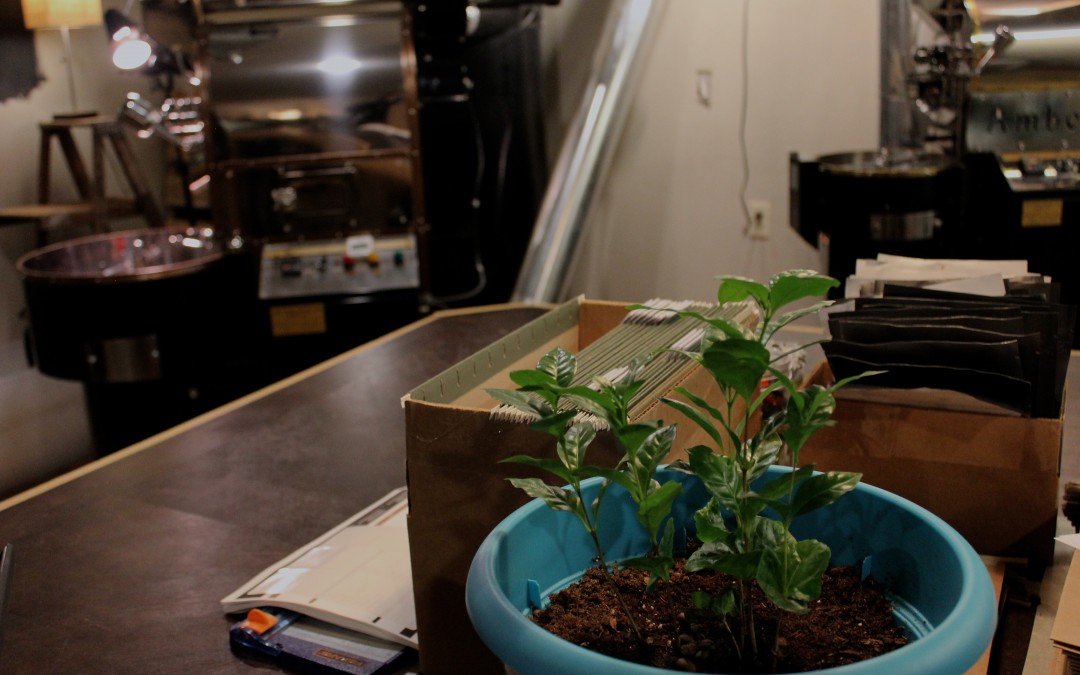Welcome to post 7 of our weekly industry thread and second installment of “You’re Coffee Landscape!” (here’s part 1)
In our last post of this mini-series, we talked about how coffee is the leading commodity from developing countries (including both Robusta and Arabica). We also worked through some of the big name brands of coffee such as Starbucks, Folgers, Maxwell House, and Keurig Green Mountain Inc.
The main idea was looking at the political choice of what coffee you’re going to buy and who it supports. This week we keep that in mind but through a filter: Coffee Rust.
The Pathogen is Hemileia vastatrix. The American Phytopathological Society discusses its importance saying it is, “the most economically important coffee disease in the world,” while “in monetary value, coffee is the most important agricultural product in international trade”.
Coffee Rust is a fungus and form lesions on the leaves until it causes premature defoliation of the plant where it weakens the plant and hurts the current, and consequential yields of the tree (Coffee Rust). This fungus was first reported in 1861 and has since spread to every country it is produced in, hurting crop yields. The issue though is the current spike in the fungus due to climate change.
National Public Radio reported that residents in Olpa, Guatemala, don’t think this issue will be solved easily. They reported that coffee rust in Guatemala now covers 70 percent of crops and has led to the loss of 100,000 jobs.
In the report Francisco Anzueto, on the Guatemalan Coffee Board: Anacafe, said, “now that it’s hotter, the rust has spread to higher altitudes, where it had rarely ventured before, and where Guatemala’s finest beans are grown.” They even reported that residents of Olpa, Guatemala, said it led to an increase in emigration to the United States for jobs.
In response to the epidemic, there was the International Coffee Rust Summit held in April 2013. It was “The first international summit of global coffee traders, coffee associations, governments and leading scientists, held April 18-20, outlined a series of specific initiatives to combat the effects of rampant coffee rust that has devastated harvests across Central America.” The event had representatives from the world’s foremost coffee producers, buyers, associations, scientists and national governments.
Acknowledged for their contributions at the summit were multinational corporations such as Green Mountain Coffee Roasters, Inc., Starbucks, J.M. Smucker, S&D Coffee and Mars Beverages, part of Mars Incorporated. The press release for the summit stated, “Green Mountain Coffee Roasters, Inc., Starbucks, J.M. Smucker, S&D Coffee and Mars Beverages agreed to continue their support of coffee producers in the region and recognize the unique quality and value of the coffees produced there.”
There was also governmental organizations present such as World Coffee Research, one of the two organizers of the summit. They are managed by The Norman Borlaug Institute for International Agriculture at Texas A&M University. A couple other government organizations at play are The United States Agency for International Development and the Inter-American Institute for Cooperation.
So what’s being done about it?
The summit was a big first step. Recognizing theres a problem is usually the first step right?
In May, 2014, The U.S. Agency for International Development (USAID) announced a $5 million partnership with the Norman Borlaug Institute for International Agriculture at Texas A&M University to help stop coffee rust. The press release said it’s a “plant disease that has caused more than $1 billion in economic damage across Latin America and the Caribbean since 2012 and seriously threatens the livelihoods and food security of those who make their living in the coffee industry, especially small farmers.”
That fund has since grown to 25 million dollars with help from Starbucks, Keurig Green Mountain Inc, Cooperative Coffees and Root Capital. This fund is dedicated to help farmers as well as educate against the disease.
There has also been a further offensive to cultivate hybrid species of immune Robusta varieties with Arabica varieties so that quality meets practicality. This is again supported primarily with those with the funds to operate these experiments such as government organizations and Starbucks.
Our Landscape
Past this information, we can safely say this is a huge market impact and will continue to grow in awareness and change the landscape of our coffee. There are certainly more specifics to learn but we can start looking, and hoping for change in the right direction.
What do you guys think this will look like? Starbucks already has a campaign for support in Mexico with proceeds from purchases to help Mexican farmers with the epidemic, but it remains in Starbucks Mexico stores for now.
Will this shift consumption to more brand-name coffees and away from specialty coffee industries that can’t afford such large-scale awareness campaigns?
My opinionated concern:
This is an epidemic and its refreshing to see government and corporations work to help and protect these farmers and their livelihoods.
Though the philosophical side of me is worried. Does their involvement come at a cost? Is this a step towards globalization? As Coffee Rust continues to hurt Arabica yields, our involvement into speciality coffee could become a dire situation. Let alone, what if Starbucks has its hands in the whole market? Their humane initiatives ensure safety for farmers but what can we do for diversity?

